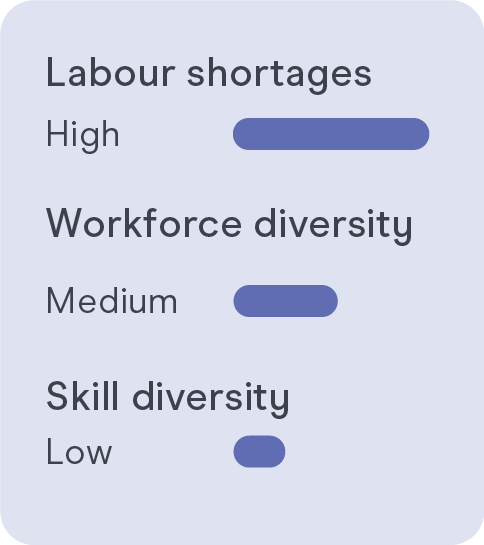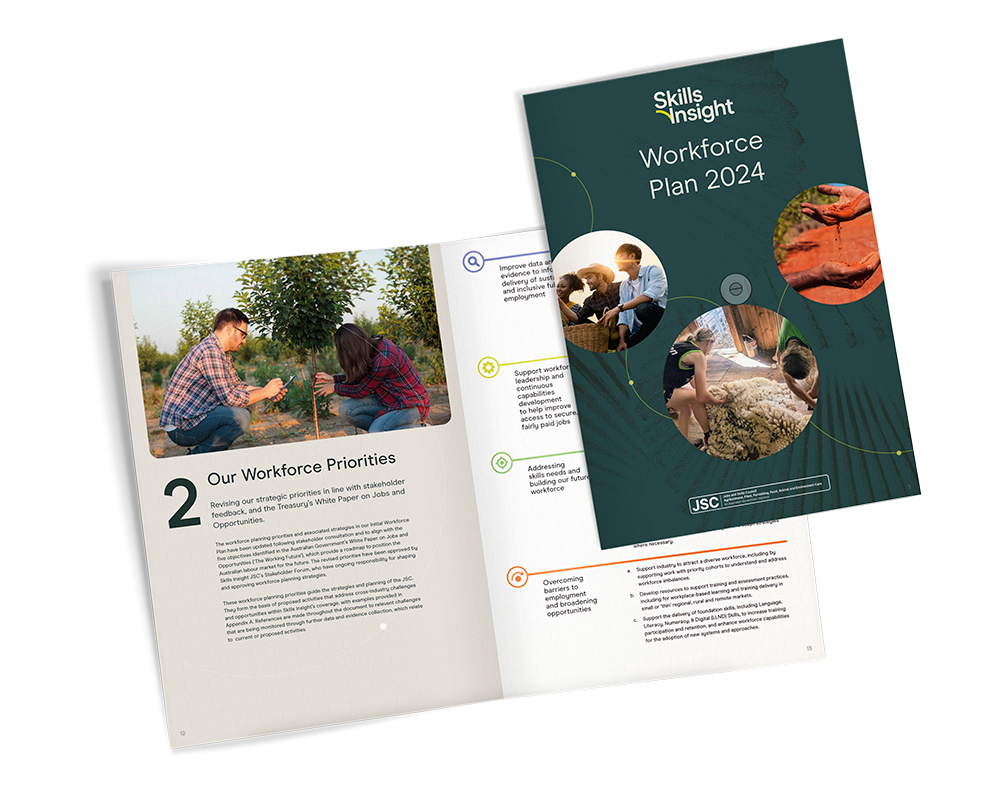The Australian meat, poultry and seafood processing and manufacturing industries are comprised of processors, wholesalers, retailers and exporters who collectively are responsible for supplying products to domestic and international markets. Workers process, grade and package meat, poultry, fish and shellfish. Strong skills in food safety, quality control, animal welfare and compliance requirements underpin Australia’s reputation for producing high-quality products.
Key updates
Declining trend in key occupations
Based on the Labour Force Survey, a significant drop in the number of workers has been observed in two key occupations: Meat Boners and Slicers, and Slaughterers and Butchers and Smallgoods Makers. The 5-year change for these occupations have been -38% and -30%, respectively, with the Nowcast of Employment (NERO) showing significant declines particularly in South-East Australia and Queensland. Meat Boners and Slicers, and Slaughterers are classed as being in shortage on the 2023 Skills Priority List. Operational and workforce challenges, including low retention rates, were exacerbated by, and continue to be impacted from, the COVID-19 pandemic.
Labour shortages contributing to productivity loss
A 2022 industry survey conducted by the Australian Meat Industry Council suggested shortages of skilled labour were contributing to over 50% of establishments operating below 80% capacity. A variety of reasons for these shortages were suggested, including unwillingness to work in the industry, competition from other sectors and lack of international worker availability.
Opportunities
Increasing international demand
Despite slowing domestic meat consumption, industry demand has remained strong from exports.
Migration Reform
Whilst workers in this industry have pre-existing migration pathways through Meat and Fishing Industry Agreements, employers must meet a salary threshold (TSMIT) that is above the median wage of the industry. The development of a new Essential Skills Pathway may provide opportunity to alleviate the persistent shortages for some occupations in this industry.
Challenges
Underrepresentation of women
Only 33% of the workforce were women, based on the 2021 Census. Whilst this was an increase of 3% from 2016, increased participation of women may alleviate some skill shortages.
Low skill level diversity
Over half of all workers in the meat, poultry and seafood processing industries are employed in occupations that align with ANZSCO skill level 5. A lack of skill level diversity can decrease industry attractiveness to workers with different skill levels.
Data monitoring priorities

55,152
workers
(2021 Census)
2.6%
First Nations
(2021 Census)
100
2028 Projection
(JSA Projections)

33%
Female
(2021 Census)

Workforce Plan 2024
The Workforce Plan describes workforce challenges and skill opportunities identified by stakeholders across the industries we work with and outlines strategies to address them.
The 2024 Workforce Plan outlines four key Workforce Planning Priorities to guide the strategies and planning of our JSC work, retaining the strategic intent of the Initial Workforce Plan, with modifications to align with the Australia Government’s White Paper on Jobs and Opportunities.